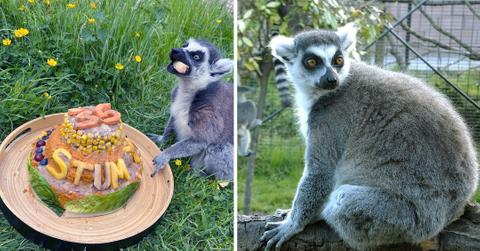
One Cute Birthday Boy! Stumpy, The World's Oldest Lemur, Celebrates Turning 35 By Munching On A Fruit & Veggie Cake
Let him eat cake! On June 14, ring-tailed lemur Stumpy, who's believed one of the oldest in the world, celebrated his 35th birthday with the zookeepers at The Five Sisters Zoo (FSZ) in the Scotland village of West Calder.
According to the organization, the species typically live to around the age of 25, but Stumpy has made it well past that mark while thriving every step of the way. "Apart from a little arthritis, for which he gets a daily dose of medicine in his favorite treat, a banana, he is still really active and is a favorite with everyone here at FSZ," the zoo stated.
Scroll down to see the critter munch away on his birthday treat!

Who needs sugar, anyway? For his big day, Stumpy chowed down on a tiered concoction that was made with lettuce, corn and berries.
The ring-tailed species got its name from the unique contrasting stripes around their tails.
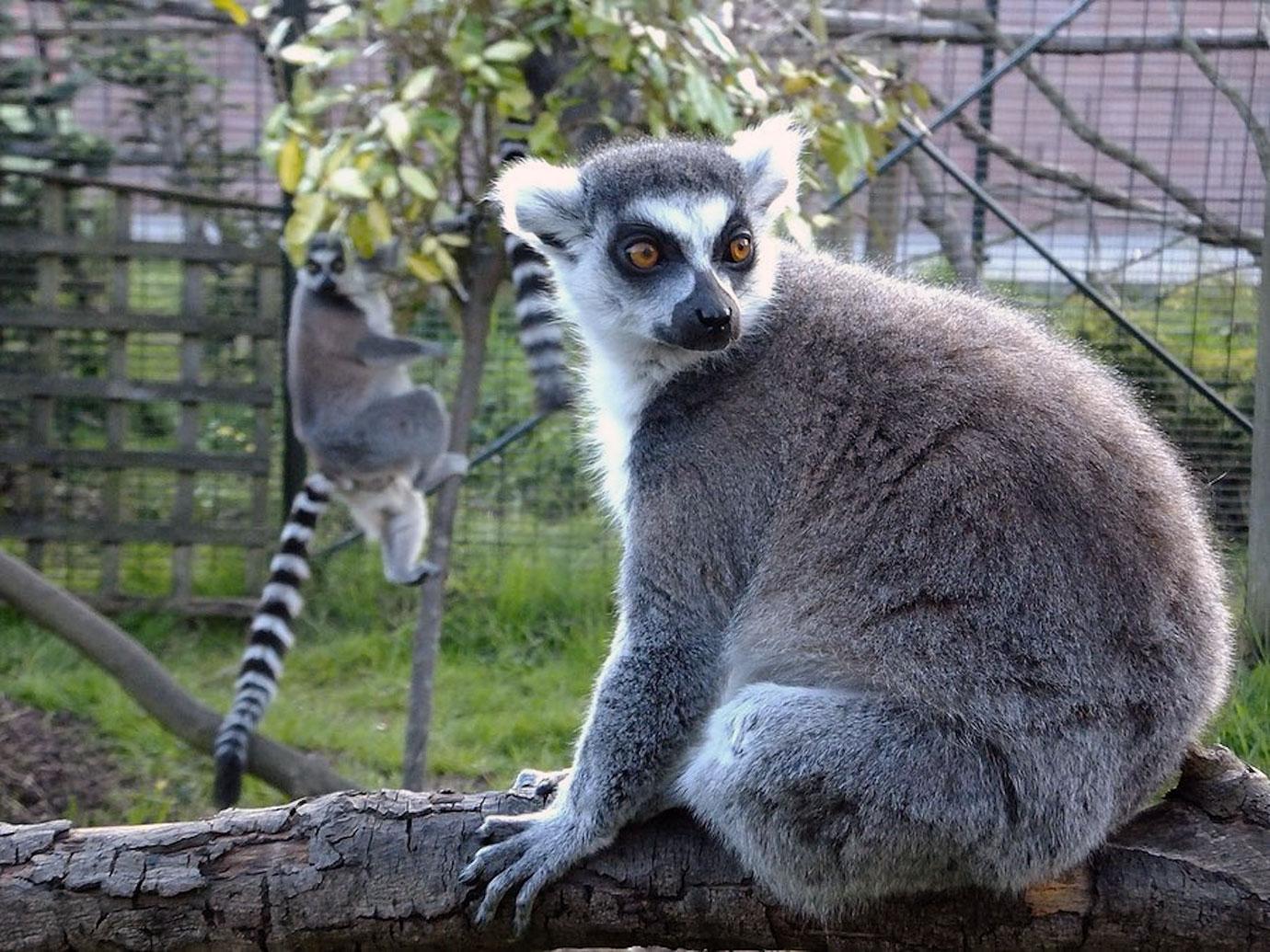
Something caught Stumpy's eye as he was perched on a tree branch, while on his friends climbed up a nearby tree.
Unfortunately, lemurs are considered an endangered animal, and the International Union for the Conservation of Nature (IUCN) "estimates that over 95 percent of lemurs face extinction in the next 20 years."
Lemurs live in groups known as "troops," which usually consist of around 17 members.
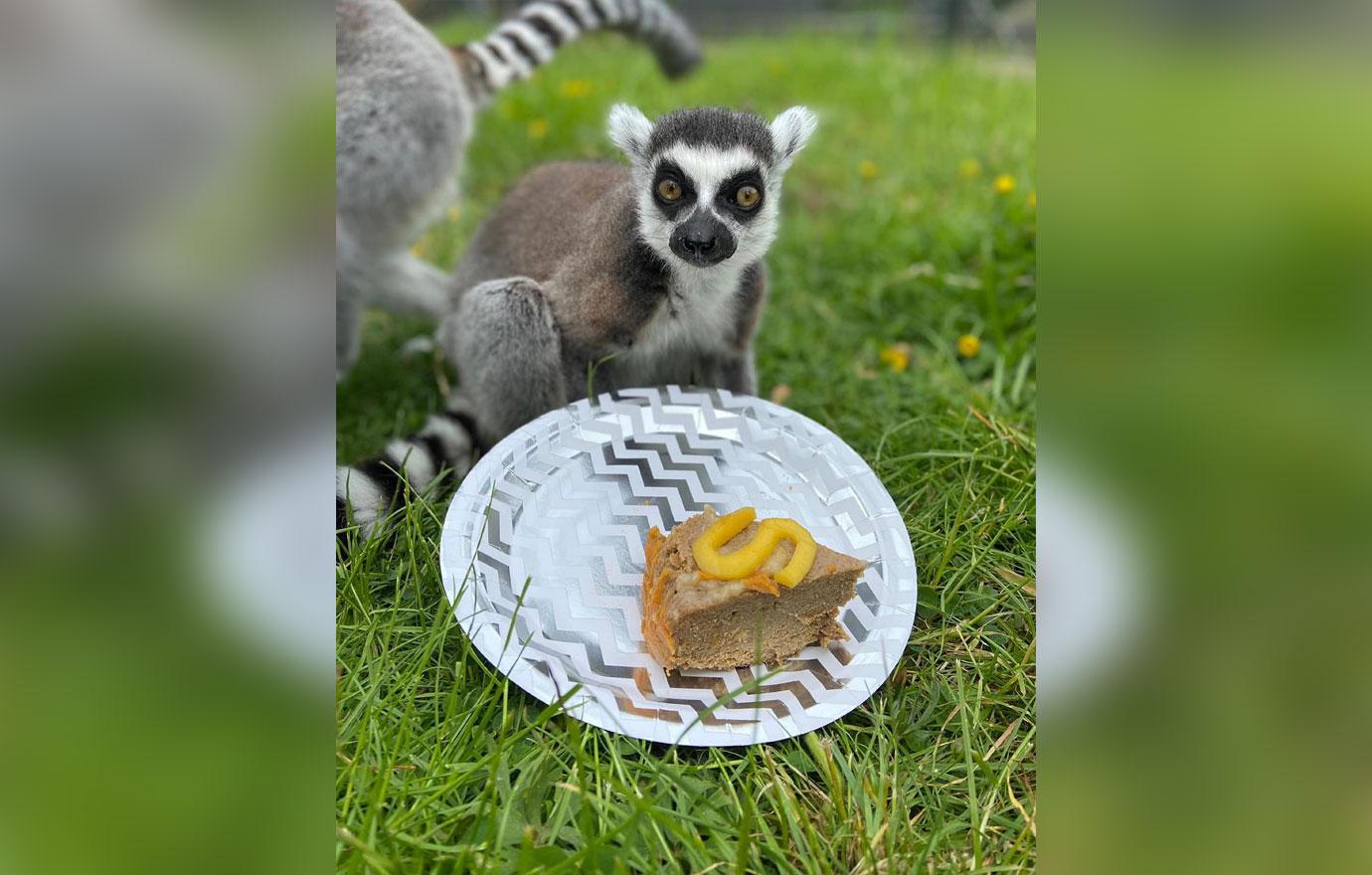
Slice, slice, baby! The zookeepers cut up the cake to hand out to the birthday boy and his pals. The primates also eat a ton of fruit, leaves, flowers, tree bark and sap.
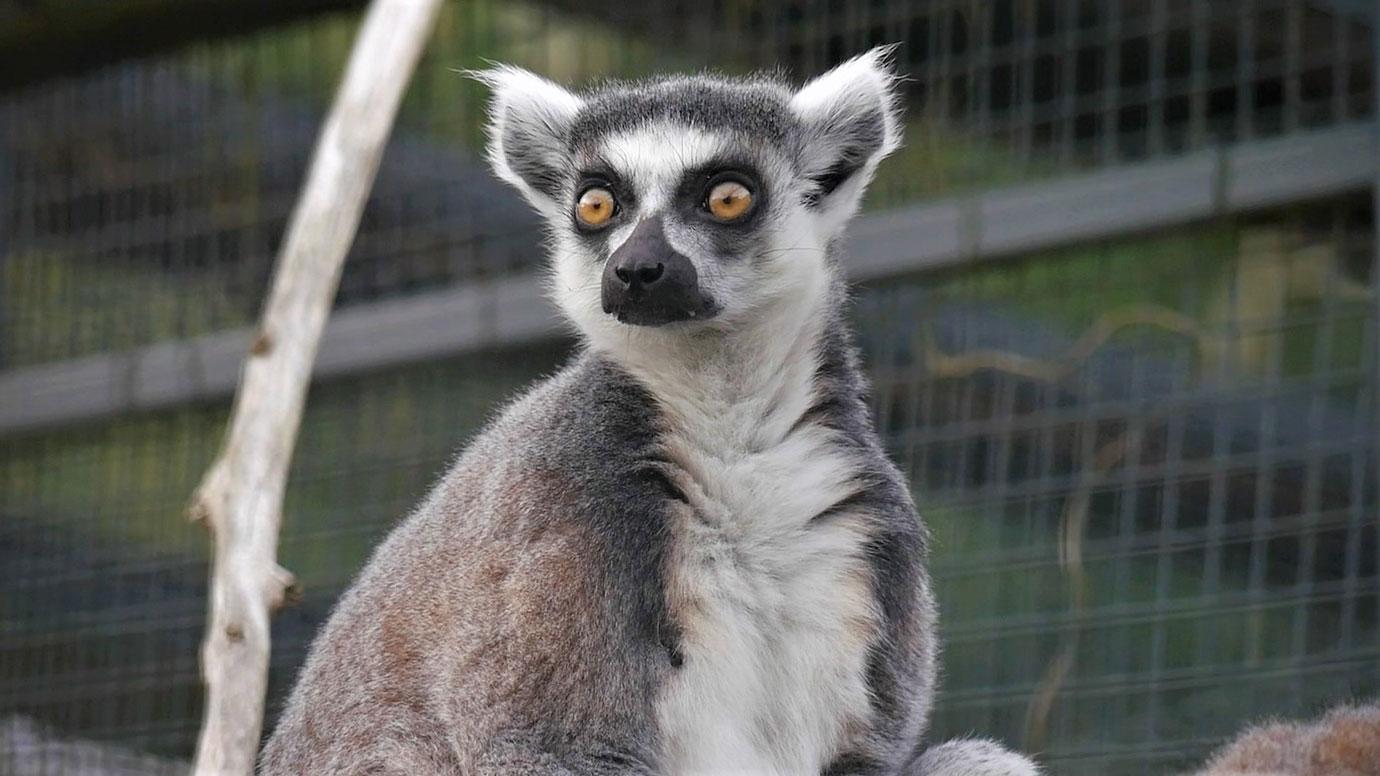
"Lemurs use their hands and feet to move nimbly through the trees, but cannot grip with their tails as some of their primate cousins do," National Geographic noted. "Ring-tailed lemurs also spend a lot of time on the ground, which is unusual among lemur species."
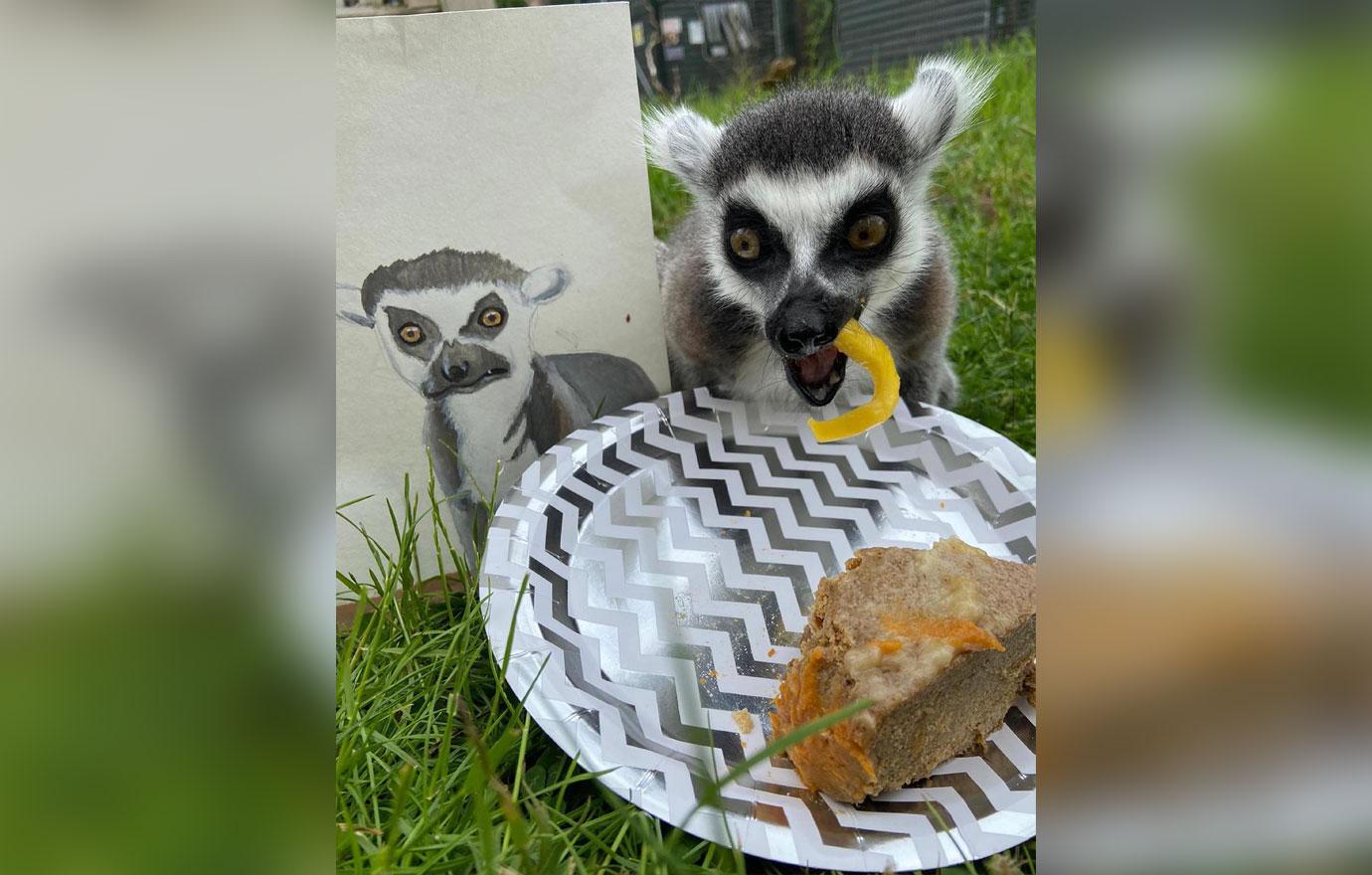
How cute! The zoo's social media page shared a photo of Stumpy eating away alongside a portrait made by one of the keepers.
The Five Sisters Zoo opened in 2005, and at the time, they had just a handful of ordinary farm animals like rabbits, goats and pigs. Since then, they've expanded to house over 165 species of creatures, including reptiles and mammals.
